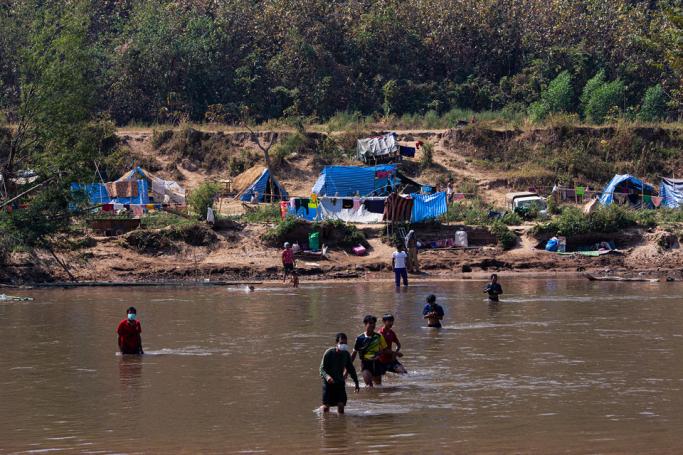Nearly 50,000 internally displaced persons (IDPs) have been driven from their homes in Karen State by more than a month of fighting between the junta forces and the allied group of the Karen National Liberation Army (KNLA) and the People's Defense Forces (PDF), Saw Nanda Sue, a spokesman for the Karen Human Rights Group, told Mizzima.
It is estimated that nearly 50,000 IDPs are from the four districts of the Karen National Union-KNU's top territory - Brigade 1, Thaton District, Brigade 3, Nyaung Lay Pin District, Brigade 5 from Mudaw District and Brigade 6 in Dooplaya District. Due to the current unstable situation, Brigade 6 has seen a significant growth in internal refugees.
There are refugees fleeing along the Thaung Yin River on the Thai-Burmese border, as well as many locals still fleeing to nearby villages. Karen civil society groups may be able to provide assistance to those fleeing along the border, but those who fled to villages such as the old town of Ywa Thit in Kawkareik could not be provided with aid or reached due to insecurity and thus they needed more help, according to a survey by Karen Human Rights Group.
There are between 3,000 and 5,000 refugees on the Thai border. Sources say that despite the Thai side's support for refugees, cross-border support is still needed.
Even though shelter and food are still needed for the refugees, emergency medication and nutritious food are more important for the elderly IDPs. Refugees also include infants, so they need some diapers and monthly supplies for women.
Fighting was still ongoing as of January 16 in Kawkareik Township, with the highest number of casualties on both sides. No casualties have been reported from the Military Council. Ko Zeyar Lwin, an officer with the White Tiger Battalion 2 in Karen State, confirmed in an interview with Mizzima that two people were dead and four people were wounded from their side.
A spokesman for the Military Council, General Zaw Min Tun, told RFA that resettlement of refugees was being carried out in the affected states and divisions.
However, the Military Council has also launched ground and air strikes on refugee camps. On January 13, the military council launched an airstrike on the Democratic Karen Buddhist Army (DKBA) base where many IDPs have fled to, an onslaught that lasted two days and two nights.
Because of these circumstances, the Military Council never spoke the truth, with the situation on the ground different, Saw Nanda Sue said.
“The situation of refugees in Karen is that if the airstrikes do not stop, there will be more refugees. The security situation in rural areas has completely deteriorated. The people, especially the oppressed ethnic nationalities, have no trust in the words of the Military Council about resettlement. It is always different from the ground,” he added.
The KNU-controlled town, Lay Kay Kaw Myothit in Myawaddy District was raided by the Military Council on December 15 for a reason that the National League for Democracy (NLD)’s Ministers, many CDM activists and members of the People's Defense Forces were hiding in the area. Starting from that day, fighting intensified between the allies of KNLA, KNDO and PDF members with the junta Military Council for more than a month, bringing the total number of refugees to nearly 50,000.












